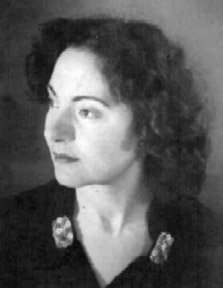
Giovanni Francesco Giuseppe Malfatti, also known as Gian Francesco or Gianfrancesco was an Italian mathematician. He was born in Ala, Trentino, Holy Roman Empire and died in Ferrara.

Lorenco Boriçi, commonly known as Loro Boriçi was an Albanian footballer who played as a forward. He is regarded as one of Albania's greatest players.

Martino Martini was a Jesuit missionary born and raised in Trento. As a cartographer and historian, he mainly worked on ancient Imperial China.

Achille Costa was an Italian zoologist working mainly in entomology who was appointed director of the Zoological Museum of Naples. He founded the entomological collections in Naples and described many new species.
The community of Chinese people in Italy has grown rapidly in the past ten years. Official statistics indicate there are at least 330,495 Chinese citizens in Italy, although these figures do not account for former Chinese citizens who have acquired Italian nationality or Italian-born people of Chinese descent.

Giuseppe Pontiggia was an Italian writer and literary critic.

Mario Equicola was an Italian Renaissance humanist: a Neo-Latin author, a bibliophile, and a courtier of Isabella d'Este and Federico II Gonzaga. The National Gallery of Art describes him as "one of the Renaissance's most admired classical scholars".

Luigi Berzano is an Italian sociologist and Catholic priest.
Giuseppe Raggio (1823–1916) was an Italian painter.
Giovanni Lorenzo d'Anania or Gian Lorenzo d'Anania was an Italian geographer and theologian.
Domenico Ligresti was an Italian historian. He was ordinario – full professor – of history at the University of Catania, in the Mediterranean island of Sicily. He wrote extensively on the history and culture of the island.

Domenico Guglielmini was an Italian mathematician, chemist and physician, active and successful mainly in Bologna and Padua.

Helle Busacca was an Italian poet, painter, and writer.

The Luzzago Altarpiece is a 1542 oil on canvas painting by Moretto da Brescia, now in the Pinacoteca Tosio Martinengo in Brescia. It was recorded in San Giuseppe church in Brescia in 1630 and moved to its present home in 1868. In the lower register Michael the Archangel points the kneeling donor to the Madonna and Child above, whilst Francis of Assisi stands to the right with a cross.
Professor Attilio Lavagna was born in Cagliari on 13 November 1872 to Carlo and Virginia Thorosano. He lived most of his life in the Italian region of Piedmont. He was appointed advisor of the Italian government under the Giovanni Giolitti government (1920–1921) and counselor in the Italian Supreme Court.
Giovanni Battista Cecchi was an Italian engraver, active in a neoclassical style in his native Florence, Region of Tuscany, Italy.
In the judicial system of the Republic of Venice, that of the Esecutori contro la bestemmia was a magistracy, with competence in the city of Venice on crimes against religion and morality.

La Festa della Venuta della Santa Casa, colloquially known as La Venuta is a traditional festival in the Marche region of Italy, also widespread in some parts of Umbria, which has been held for more than four hundred years on the night between the ninth and tenth of December, lighting large bonfires in cities, towns and the countryside.

Joseph Hager was an Austrian linguist, lexicographer, orientalist, writer and academic naturalized Italian.

The Accademia degli Oziosi was the most famous Neapolitan literary academies of the Renaissance.












